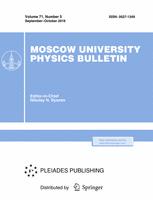Annotation
A fragment of an archaeological iron spear extracted from an unearthing in North Osetia, where it had been exposed to soil corrosion in humid conditions for 19 centuries, has been studied for its chemical and structural composition. With the aid of a comprehensive technique involving X-ray diffraction analysis, M$\stackrel{..}{o}$ssbauer spectroscopy, and thermomagnetic analysis the following compounds have been found as the main corrosion products: superparamagnetic hoetite {$\alpha$-FeOOH), hydrohoetite {FeOOH$\cdot n$H$_2$O), and iron sulfides (pyrite FeS$_2$ and pyrrhotine Fe$_7$S$_8$).
© 2016 Publisher M.V.Lomonosov Moscow State University
Authors
A.A. Novakova, N.D. Manyurova, T.S. Gendler
Department of Solid-State Physics, Faculty of Physics, Moscow State University, Leninskie Gory, Moscow, 119992, Russia
Department of Solid-State Physics, Faculty of Physics, Moscow State University, Leninskie Gory, Moscow, 119992, Russia



